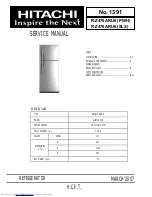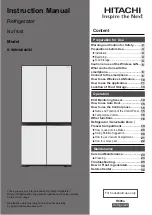
41
USING THE REFRIGERATOR EFFICIENTLY
Practical everyday tips
● Do not place fridges or freezers next to radiators,
heaters, stoves or in direct sunlight.
● Make sure that air vents are not covered up and
clean the dust off them once or twice a year.
● Select the right temperature: 6 to 8°C in your
refrigerator and -18°C in your freezer is sufficient.
● When on holiday, turn up the temperature in your
fridge.
● Only open your fridge or freezer when necessary.
It helps if you know what food each contains and
where it is located. Return food to the fridge or
freezer as soon as possible after you have used
it so that it does not warm up too much.
● Wipe the inside of your fridge regularly with a
cloth soaked in a mild detergent. Appliances
which are not self-defrosting will require regular
defrosting. Do not allow frost layers thicker than
10 mm to form.
● Keep the seal around the door clean, otherwise
it will not shut properly. Always replace broken
seals.
Understanding the stars
* Temperature is at least -6°C; sufficient to store
frozen food for about a week. Drawers or com-
partments marked with one star used to be a
feature of (mostly) cheaper fridges.
** Food can be stored at -12°C or below for 1-2
weeks without losing its taste. Not suitable for
freezing food.
*** This rating is mainly used to store foods at -18°C
or below. Can also be used to freeze up to 1
kilogram of fresh food.
**** This appliance is suitable for storing foods at
-18°C or below and freezing larger quantities of
fresh foods.
Storage zones in the refrigerator
● Due to the natural circulation of the air in the
appliance, there are different temperature zones
in the refrigerator chamber.
● The coldest area is directly above the vegetables
drawers. Use this area for all delicate and highly
perishable food e.g.
- Fish, meat, poultry
- Sausage products, ready meals
- Dishes or baked goods containing eggs or
cream
- Fresh dough, cake mixtures
- Pre-packed vegetable and other fresh food with
a label stating it should be kept at a temperature
of approx 4oC.
● The warmest area is in the top section of the
door. Use this for storing butter and cheese.
Food that should not be stored in a refrigerator
● Not all food is suitable for storing in the refrige-
rator, particularly:
- Fruit and vegetables which are sensitive to
cold, such as bananas, avocado, papaya, pas-
sion fruit, aubergines, peppers, tomatoes and
cucumbers.
- Fruit which is not yet ripe
- Potatoes
Example of storing the food - see figure 12.
EN
Содержание FK321.4DF
Страница 3: ...3 1 ...
Страница 4: ...4 3 2 8 9 10 5 6 ...
Страница 5: ...5 12 15 16 1 2 3 4 5 11b ...
Страница 6: ...6 1 2 3 4 5 6 7 8 20 ...
Страница 7: ...7 10 11 12 13 14 15 16 17 18 19 9 ...
Страница 8: ...8 ...
Страница 9: ...9 ...
Страница 85: ...85 ...
Страница 86: ...86 ...
Страница 87: ...87 ...
















































